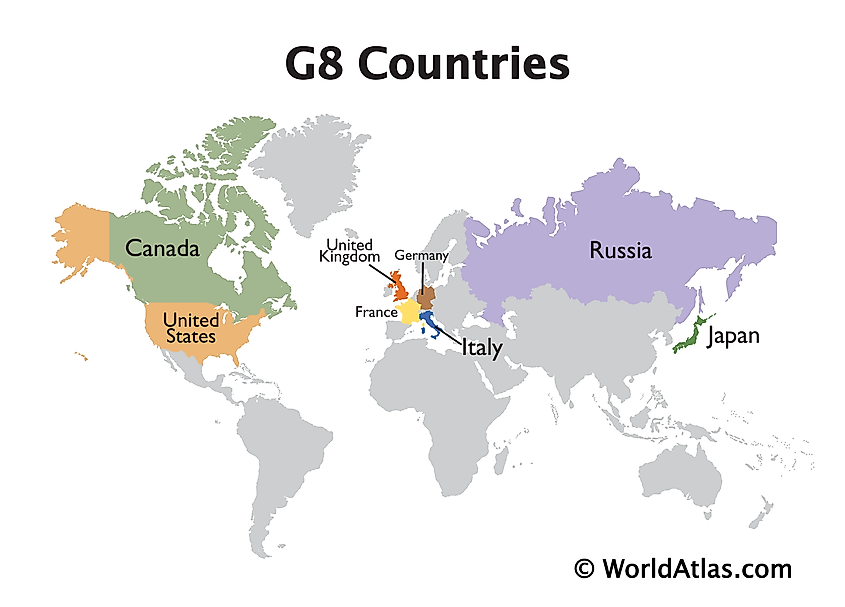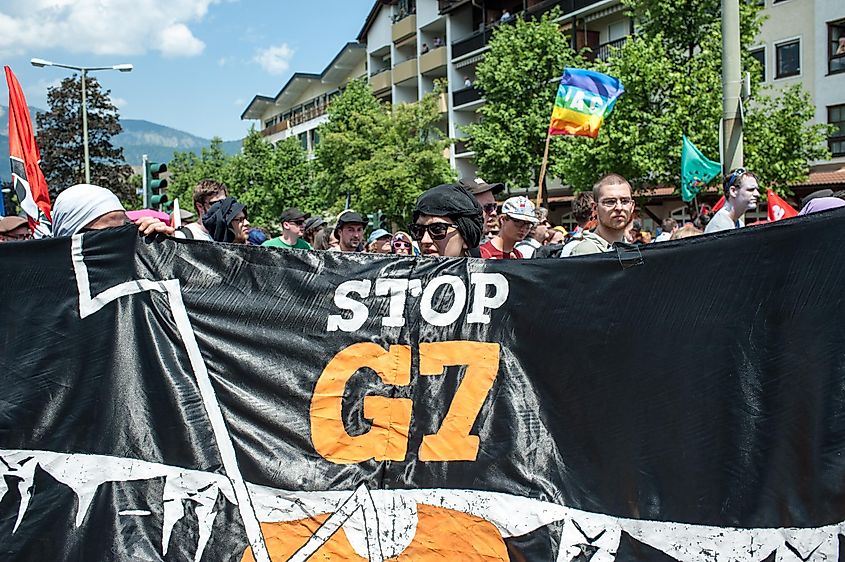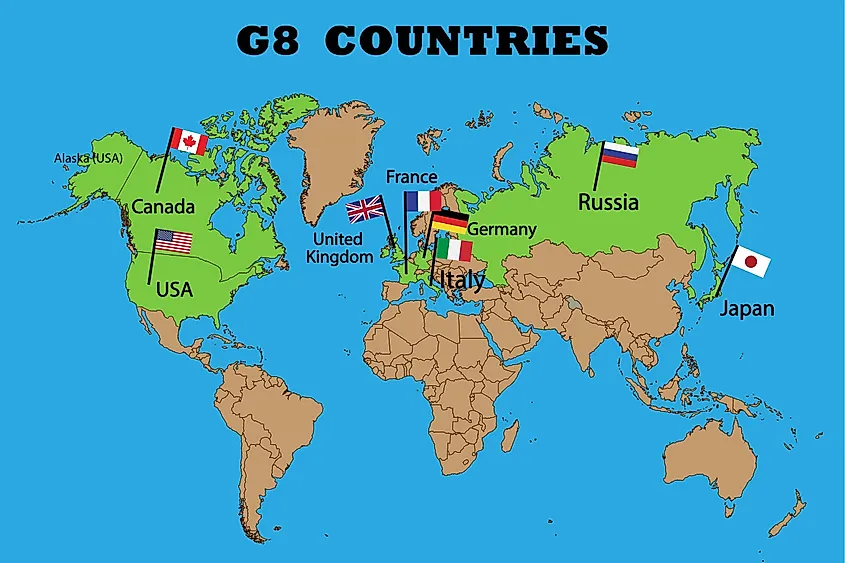
Group Of Eight (G8)
The Group of Eight, commonly known as G8, was a political forum formed in 1997, following Russia's addition to the G7 group. The Group of Seven (G7) comprised the United States, the United Kingdom, Japan, Germany, Italy, France, and Canada. The G8 lasted until 2014 when Russia was suspended from the forum due to its annexation of Crimea. In 2017, Russia permanently withdrew from the group, and the existing member-countries reverted back to the G7. However, several G7 representatives, including Donald Trump (former US president), have advocated for Russia’s return to the forum. The first G8 Summit was held in 1994, and the last in 2013.

History And Formation
After the 1970s energy crisis and the economic challenges that followed, global leaders were determined to find a lasting solution to the problem and others facing the globe. In 1975, representatives from six highly industrialized countries, the UK, the US, France, Italy, West Germany, and Japan, met in Château de Rambouillet, France, for an informal discussion. The following year, Pierre Trudeau, Canada’s Prime Minister, was invited to join the group, and the group officially became the Group of Seven (G7). In 1977, the UK invited the European Union to the group. Since then, the European Commission’s president (the executive branch of the European Union) and the leader of the country who holds the EU presidency have regularly attended the G7 summits.
After the 1994 G7 Summit in Naples, Russia met separately the G7 leaders in a series of meetings referred to as Political 8 (P8) or G7+1. Later, Bill Clinton (US) and Tony Blair (UK) invited Boris Yeltsin, Russian president, as a guest observer. After the 1997 meeting, the summit invited Russia to formally join the group the following year, resulting in the Group of Eight (G8) political forum. Russia’s financial weight was the lowest of the eight countries and the International Monetary Fund never considered its economy as advanced. In 2014, Russia was suspended from the forum, following its annexation of Crimea. It officially withdrew from the forum in 2017.
Structure And Leadership
Unlike other international organizations, the G8 did not have a formal charter, offices, or permanent secretariat. The discussions took place in informal settings, with the summit’s agenda depending on the international events of circumstances. For instance, the forum’s focus was the energy crisis in the 1970s, environmental issues in the 1980s, financial instabilities in the 1990s, and problems faced by Africa in the early 21st century. In 2009, the G8’s major focus was the global food supply, with the members pledging to contribute $22 billion towards the issue, of which 93% had been disbursed by 2015.
The forum’s leadership is rotational, with each new leader beginning their term on January 1. The rotation order starts with France and ends with Canada, with Russia (now suspended) assuming the presidency after the US and the UK respectively. Currently (G7), Germany takes over the group’s presidency after the UK and is succeeded by Japan followed by Italy. The country holding the presidency plans and hosts the inter-ministerial meetings preceding the annual summit.
Relevance And Criticism

Several people have criticized the G8 countries for not doing enough to provide solutions to global economic problems. The countries’ relevance has been subjected to numerous debates, with some critics arguing that some of the members' economies are no longer the world's strongest. The G20 countries are now considered to have more influence and impact than the G8 countries. China, with the second-strongest economy after the US, has never been a G7 or G8 member. Since 2000, the annual summits have attracted numerous demonstrations and intense media scrutiny.












